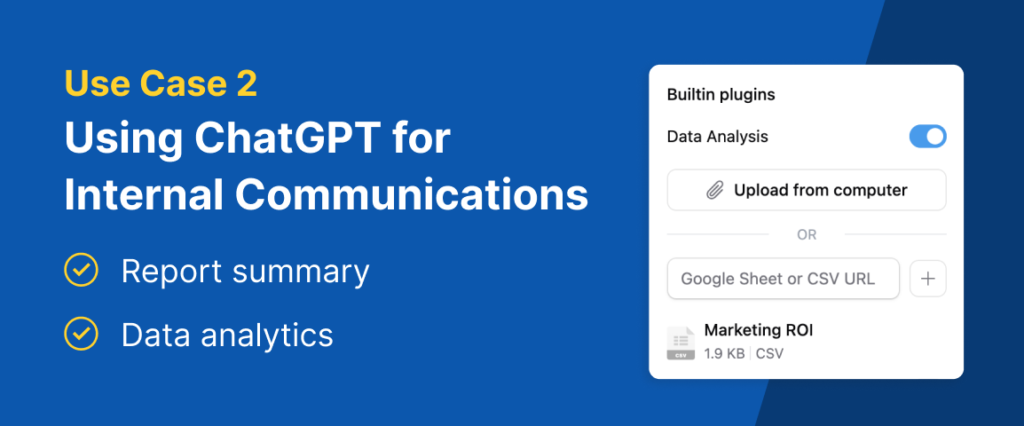
Artificial intelligence (AI) offers tremendous potential for businesses to streamline operations, enhance customer experiences, and analyze the competitive landscape.
The power of ChatGPT or related AI solutions (see TeamAI) can be integrated with existing tools, platforms, or workflows to automate and expedite repetitive tasks. This allows teams to focus their energy on strategic and high-level initiatives. These generative AI tools’ power lies in flexibility and adaptability, bringing a novel approach to handling a wide array of business tasks.
However, effectively scaling AI across the organization can be challenging. Finding the right balance between pushing out new, innovative approaches while maintaining the effectiveness of your teams requires careful consideration.
There will inevitably be tasks that need to be outside its capability scope. Thus, the importance of comprehensive testing cannot be overstated. Trials of prompt design and quality control checks are necessary to ensure the tool accomplishes tasks as expected and ensure the seamless integration of ChatGPT, TeamAI, or related tools into your business infrastructure.
Streamlining Operations with ChatGTP and Large Language Models
In order to scale your business impact with ChatGPT or other Large Language Model solutions, you’ll need to work the technology into your existing business operations. This will streamline your process, resulting in more efficiency and effectiveness; however, you must carefully make these changes with a coordinated approach.
Let’s explore the steps to streamline your operations using AI:

Align with Business Goals
AI projects must be tightly aligned with clear business goals and outcomes. Before investing in AI, companies should identify high-impact business challenges that AI can help solve, such as reducing customer churn, automating repetitive tasks, or optimizing supply chain operations. The business goals should drive AI adoption rather than the other way around.
Explore the routine challenges in your business.
Build AI Expertise
Scaling AI requires skilled professionals who understand the business/industry and the limits of the AI solution being considered. Companies should invest in upskilling employees through training programs, certifications, and experiential learning. In some cases, businesses may want to hire external AI experts who can also bring valuable skills and experience.
For most businesses, they’ll be able to train their employees and create relevant procedures to achieve this step without hiring new employees.
Take an Iterative Approach
AI solutions should be implemented iteratively, starting with limited-scope pilots. This allows businesses to test AI implementation and refine prompts and strategies based on results and user feedback.
With each iteration, companies can expand the scope and scale of AI deployment across the organization. An agile, phased approach prevents overinvestment in untested AI solutions.
Curate Quality Data
High-quality, well-organized data is the fuel that powers AI. Companies that feed the correct information into their tools will see more efficiency and quality. Products like TeamAI allow you to upload your documents and leverage these when integrating with AI models like PaLM, Claude, or GPT4.
Manage your data and resources when planning your AI integration.
Choose the Right AI Tools
With the exponential growth in AI tools and platforms, evaluating and selecting the right solutions for your business needs is important. Companies should consider ease of use, integration with existing tech stack, scalability, and transparent AI solutions. Leveraging solutions built with businesses in mind is highly important, given the flood of hobbyist tools in the market.
Leveraging pre-built solutions can accelerate development versus building custom AI from scratch.
Measure Results and ROI
When leveraging new AI tools within a team, a business requires concrete metrics for success tied to business goals. Teams should define key performance indicators (KPIs), monitor performance, measure ROI across use cases, and adjust based on results. This performance-driven approach ensures that AI delivers maximum business value as it scales.
Start by mapping your current processes to specific KPIs.
Gain User Adoption
The best AI solutions only succeed if users adopt them. Companies should involve all team members early and often when designing and testing AI solutions. Provide training on new tools or processes and leverage user feedback to improve the experience.
Keep change management in mind when scaling your AI solutions across wider teams.
Scaling AI comes with challenges, but the effort can transform business performance done right. Companies can unlock generative AI’s full potential with deliberate strategy, expertise, and responsible use.
Let’s explore some use cases on how to scale across various aspects of your business.
Use Case 1: How to use ChatGPT for external communications
You can use ChatGPT for external communications in several ways— communicating with your customers (and potential customers). Here’s a more in-depth look at some ways LLMs can help with external communications:
- Emails: ChatGPT and similar tools are great for helping you write email copy. You might not want to use whatever ChatGPT spits out verbatim, but you can certainly use its suggestions as a starting point for your email copy, subject lines, and body.
- Social media: Just like with emails, your social media team can use ChatGPT to help you write social media posts more efficiently for marketing purposes and as part of your customer service efforts.
These uses mean that ChatGPT is perfect for streamlining your external communications processes.

Use Case 2: How to use ChatGPT for internal communications
Just as you can use ChatGPT to help you communicate with your audience, you can also use it to assist with your internal operations. Some of the ways it can help you streamline those operations include:
- Report summary: Sometimes, you’ll find yourself dealing with large, convoluted reports that you simply don’t have the time to deal with. In those cases, you can use ChatGPT to help you summarize the information there so you can still get the gist in less time.
- Data analytics: ChatGPT can help you analyze datasets more quickly. You can input the data, and ChatGPT can reveal specific patterns or trends. That enables you to get data insights more quickly.

Integrating ChatGPT with other business tools
One thing that can help you more smoothly implement Generative AIT into your business processes and scale your overall team impact is integration with other tools. Many tools now offer integration with ChatGPT, meaning you can harness the power of generative AI while using those tools.
Some examples of tools that offer some form of ChatGPT integration include:
- Marketo
- Microsoft Excel
- Zapier
- Semrush
- And more!
Check with your vendors to see how they’re integrating their tools and what the best way to interact with these updated features may be.
TeamAI is Built for Scaling an Entire Team’s AI Operations
As we’ve seen, using an LLM like ChatGPT can help you significantly streamline your business processes and thereby scale your team’s impact.
TeamAI was built for businesses first and offers collaborative solutions unavailable within tools like ChatGPT.
Unlike ChatGPT, which limits you to the OpenAI model, TeamAI is model-agnostic, meaning it can work with whichever currently available model. TeamAI has been built from the ground up to be useful for team collaboration, not just for a single user or hobbyist.
